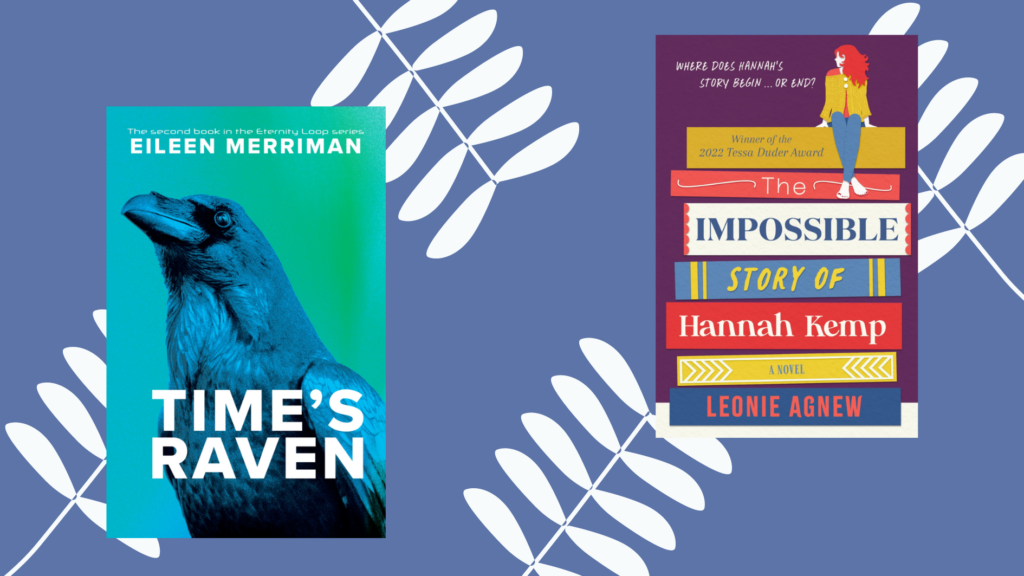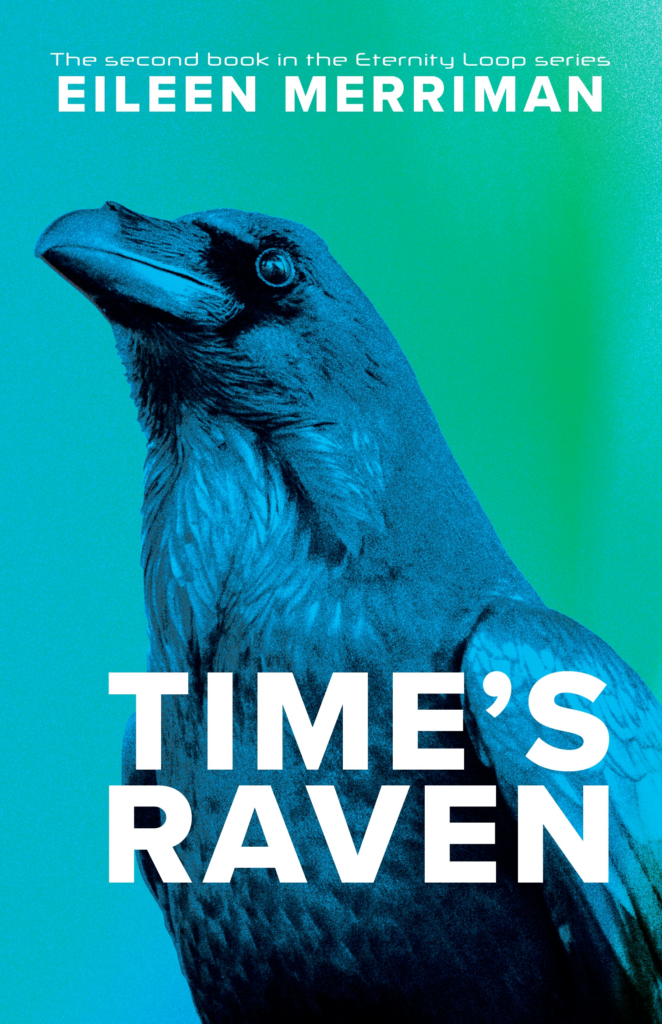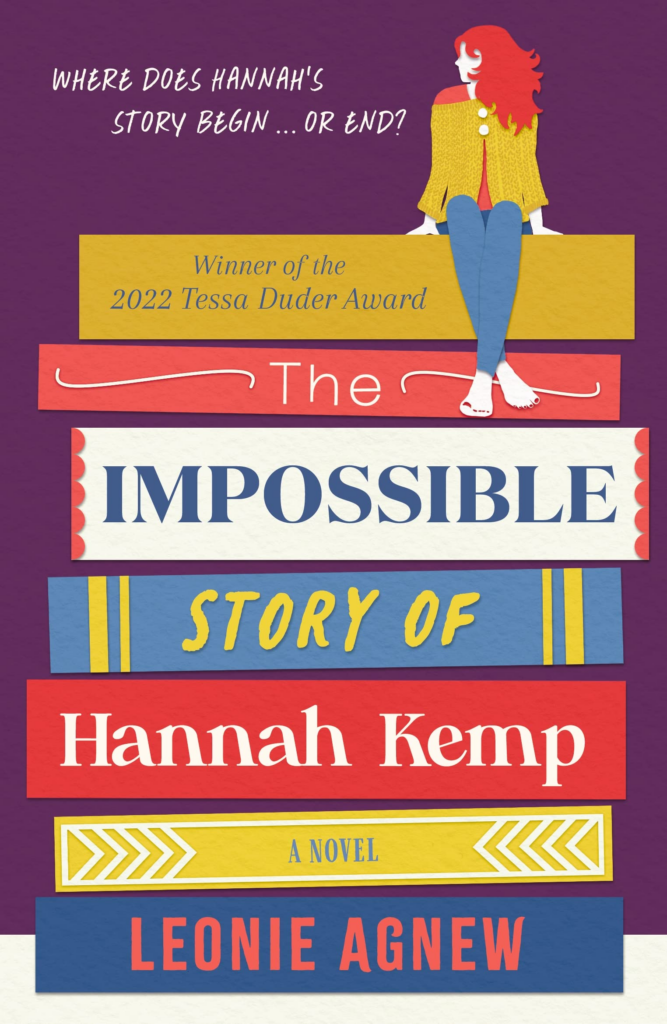Venice White finds lots to rave about with two new novels for the upper-YA audience, from veteran Kiwi authors Eileen Merriman and Leonie Agnew.

Time’s Raven, by Eileen Merriman
Time’s Raven is the second book in Eileen Merriman’s Eternity Loop series, following on from Indigo Moon. Indigo Hoffman and Rigel Hunter are Offspring: incredibly gifted children of virally optimised parents, with the ability to think-speak, shift into whatever animal they like, and even time travel (although this is technically forbidden). Set in New Zealand, the year is 2066 and the world looks a little different: the Climate Convention controls the weather (to an extent), people travel in Zubers, drones are used for deliveries and the Auckland Harbour Bridge is now underwater due to rising sea levels. Also, no one eats meat anymore because it’s “so old-fashioned.”
The reader is reintroduced to Indigo and Rigel two months on from the events of the first book. They are recovering after defeating villainous Billy Raven (or so they think), as well as dealing with the devastating loss of Rigel’s father, Johnno. They make a powerful duo: best friends who share the same enhanced abilities, trying to navigate growing up in a world that can’t know their full potential. At times, I felt frustrated with their brashness, charging into situations head-on, but I also appreciate that I am reading this from a slightly older point of view—my younger self would have definitely wanted to be Indigo’s sidekick.
[Indigo and Rigel] make a powerful duo: best friends who share the same enhanced abilities, trying to navigate growing up in a world that can’t know their full potential
Things are more complicated now that Indigo and Rigel know they have feelings for each other. I was a little taken aback at what this led to, especially because Indigo had recently emerged from an abusive relationship with Billy. However, it’s a nice change to read YA fiction where the characters aren’t overly coy about how they feel.
As with the first book, the story is told in alternating chapters from the point of view of Indigo and Rigel. This was effective because their voices are very distinct, and so switching POVs with each chapter really worked in building tension. And this time, Billy Raven gets his own chapters too. Surprise! He’s back from the ‘dead’! I would have liked a little more explanation as to how this was possible, but seeing as his general existence is a lot more complicated than the average person’s, I was able to eventually accept it.
Although Time’s Raven progressed the narrative and introduced new characters, it also frequently intertwined with the events from the first book which made for a very immersive reading experience. Because most of the characters can time travel, you, as a reader, felt like you had that ability too.
Because most of the characters can time travel, you, as a reader, felt like you had that ability too
However, despite no time-travelling, like, ever, being an absolute rule, there is a lot of it going on, and with no real consequences. Or if there are, even more time travel is used to avoid or counteract them. The ‘optimised’ characters are immortal, but they are not immune to death. Their ability to change the events of the past, and even the present, meant some of the more dramatic events lost their impact, especially towards the end.
I felt a little lost in terms of how the ‘optimised’ characters fit in amongst the normal society because so much of the narrative was focused on their (much smaller) optimised community. I think I would have had a greater understanding as to why Indigo and Rigel’s breaking of the rules was such a threat to their existence if I had read about M-fever and their parents in the Violet Black series first.
I thought it was intriguing and topical that the novel dealt with very real issues regarding viruses and stem cells, especially from the point of view of young people
However, I thought it was intriguing and topical that the novel dealt with very real issues regarding viruses and stem cells, especially from the point of view of young people. It’s frightening to consider how science can play such a sinister role when mortality is at stake.
Overall, I am glad to have been introduced to this series and author. I became very attached to Rigel and Indigo, and I was intrigued by their abilities and the concept behind this book. I also loved that Rigel’s younger brother Fox got some page time. This series would be perfect for any older YA readers who love a fast-paced, dystopian adventure, involving characters with incredibly cool names, set not too far from home.

The Impossible Story of Hannah Kemp, by Leonie Agnew
Content warning for fatphobia: At several points throughout the book, Hannah makes derogatory observations about the librarian’s weight. These comments are never said out loud; however, they contribute towards the reader’s image of the librarian’s physical character. The librarian is also not given a name, and therefore Hannah’s attitude towards this woman’s weight others her further. Anyone struggling with body dysmorphia should take this into account before reading.
Hannah Kemp is a wicked-smart, angry and outspoken fifteen-year-old girl with an aptitude for getting into trouble. We meet her in the immediate aftermath of an unmentionable accident, which is not revealed to us until a good deal of suspense later. The story really begins when Hannah stumbles into a mobile library in an attempt to escape her (adoptive) mother. Here, she discovers what seems like an overwhelming number of books housed in a bus under the watchful eye of a peculiar librarian. The books contain what initially seem like mundane stories, but later turn out to involve characters much closer to home.
Books and the stories they contain are what give Hannah the compassion and understanding she needs to help other people, and eventually let them help her
Hannah is very vocal about her frustration towards living in the small town of Arrow Hill, and her plans to leave it as soon as possible. Her adoption ten years prior means she is inherently an outsider, and everyone seems to have no problem reminding her of it—even her (equally troubled) best friend, Jody. Hannah is also constantly observed and attacked by Mrs O’Halloran, who was also involved in the accident, and her own mother, who is very good at never letting Hannah finish a sentence, let alone hear her side of the story. The need to find a place and people to belong to is Hannah’s greatest wish.
This book had the classic slew of secondary characters: the boy in the bookshop, the curtain-twitching woman, and the troubled best friend. But they all had a deeper story—a series of complexities that the reader only learned once Hannah did, which took a while because she was very preoccupied with her own thoughts. The distortions some of the other characters put themselves through in order to fly under the radar as much as they possibly could were upsetting to read about but is a reflection of many people’s reality.
Hannah’s mum often quoted “People come before books,” which is an interesting statement given the plot of this book, where books and the stories they contain are what give Hannah the compassion and understanding she needs to help other people, and eventually let them help her. This quote was in retaliation to Hannah’s relationship with her dad, which was built entirely on books, but the scenes of the two of them bonding over Frankenstein and Great Expectations were some of the most wholesome parts of the entire story.
The story did a really good job of making me question why we trivialise the thoughts and feelings of anyone younger than we are
Like every good young adult novel, the reader is flung into the often turbulent mind of an adolescent. This point of view can give the reader both some perspective and relief on how far we have come since being a teenager. The story did a really good job of making me question why we trivialise the thoughts and feelings of anyone younger than we are. Even I fell into the trap of thinking Hannah was probably exaggerating when it came to the ‘accident’ she was responsible for, and how she was treated generally. I assumed her experiences couldn’t have been all that bad, when in actual fact they were. Young people need to be listened to—they see and feel as much as we do, but often without the same abilities to cope with and understand it all.
There was a very unexpected turn of events around three-quarters of the way through. While I was initially curious as to how it was all going to work (logic-wise), I ended up admiring how an out-of-this-world encounter helped Hannah understand her past, and therefore herself, more clearly.
Hannah’s self-awareness and observations had me laughing out loud more than once, and I was grinning at the page even more frequently. I loved this line in particular: “I’ve never figured out why teachers reward good grades with extra work. Do they go home and say, I’ve worked hard and deserve another few hours of work? No, they do not.” (pg. 121). I wish I had even half her repertoire of one-liners when I was fifteen, as well as her confidence in standing up for what is right.
It was also such a treat to read a modern story focused on the joy of books and reading, and uninhibited by technology and social media
Overall, Hannah Kemp’s impossible story was thoroughly enjoyable and sparked my imagination. My younger self would have loved to read a book like this, set in Aotearoa while feeling very Jacqueline Wilson-esque. It was also such a treat to read a modern story focused on the joy of books and reading, and uninhibited by technology and social media—largely because Hannah had her phone confiscated more often than not. People always turn to stories to figure things out or learn more about themselves, so it’s a delicious idea that we could read our own stories, or those of the people around us, and learn how to do better.

The Impossible Story of Hannah Kemp
By Leonie Agnew
Published by Walker Books Australia
RRP: $23.00

Venice White
Venice White used to get in trouble for reading too much instead of doing her homework, so it’s really the dream scenario for her to be sent books and then get to write about them. She is based in Tāmaki Makaurau and loves all things book-related, writing, art and crochet. Venice has worked in two bookshops and studied publishing – both of which have increased the variety of books and amount she has read, but she still especially loves curling up with a YA novel and a cup of English Breakfast tea.



